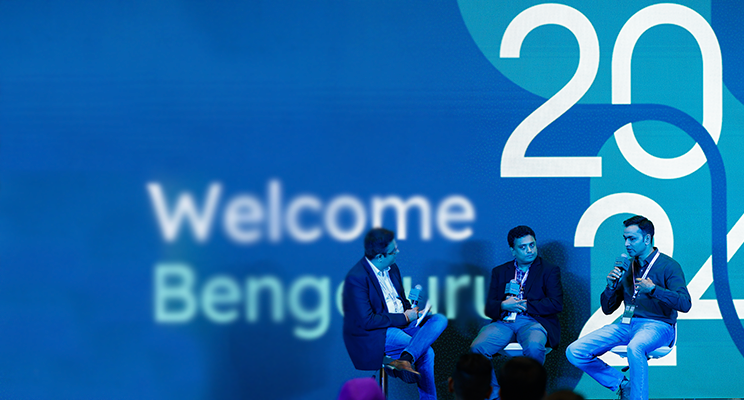
Building Resilient and Scalable Cloud Applications as AI Adoption Accelerates
FourKites, Inc.
FourKites extends visibility beyond transportation into yards, warehouses, stores and beyond.
By Shivakumar Athreya , Sr. Technical Architect, FourKites
I recently had the chance to participate in a fireside chat at MongoDB Atlas. Along with Ram Bhavaraju from Vistortec, we discussed how to create robust, scalable applications in the cloud, and the common challenges faced, especially as the adoption of AI-powered applications grows.
What Do We Mean by Resilience and Scalability?
To kick things off, we grounded our discussion in practical terms. When talking about resilience, I'm referring to an application's ability to bounce back from failures and keep running with minimal downtime. Scalability, on the other hand, is about ensuring your app can handle growing loads without slowing down.
One of the big challenges many are grappling with right now is integrating third-party AI services like OpenAI and Gemini. These services are powering many of the latest LLM-based applications, but they bring their own set of complexities. We've had to rethink how we design fail-safe mechanisms and manage downtime when dealing with these external AI dependencies.
During our discussion, Ram and I touched on the five key pillars that guide our cloud architecture decisions. These principles have become essential for us, especially when building cloud-agnostic applications that run across multiple availability zones.?
These pillars serve as practical guidelines that should shape your daily decisions about building and maintaining cloud applications.
Finding the Right Balance
During our chat, we explored the tricky business of balancing the two goals of resilience and scalability, which can often pull you in opposite directions.
At FourKites, we've found that prioritizing based on customer impact is key. For our AI-driven applications, we often need to build in redundancies. This might mean having local models as backups to handle issues like token quotas, API throttling, or slow response times from external services.
I also shared a nuanced point about traditional microservice architectures. While resilience is always on our minds, with microservices, we often put scalability first. Our approach is to make sure the application is stable and can grow with demand, then work on enhancing its resilience over time.
Microservices and Cloud-Native Apps
Unfortuantely, we ran out of time to discuss it, but it’s important to consider the benefits of microservices and cloud-native technologies — though they shouldn’t be viewed as a cure-all.
For example, at FourKites we’ve built our AI-driven supply chain visibility platform using a microservices approach. This lets us isolate and independently develop different parts of the system. But the nature of our application — dealing with massive amounts of real-time logistics data — meant that we had to think carefully about where each service should live.
Some of our AI models, for instance, needed specific hardware setups that were actually more cost-effective to run on-premises. The takeaway here is that it's not always about being 100% cloud-native. It's about making smart architectural decisions based on your specific needs.
Overcoming the Hurdles
Our discussion also revealed several common challenges in adopting microservices and cloud-native architectures:
At FourKites, we've had success using service mesh solutions to manage communication between services and improve observability. We've also put a lot of effort into continuous learning programs for our team.
One point I really want to drive home on this topic is the importance of robust observability and monitoring. As your system becomes more distributed, being able to quickly spot and fix issues becomes critical. This is something that's easy to overlook but can make or break your application's performance.
Looking Ahead
As we wrapped up, Ram and I shared some key takeaways for developers and architects:
And continuous refinement is critical. We're always analyzing our usage data and tweaking our architecture. This iterative approach has helped us achieve a balance between high availability and scalability.
Looking to the future, edge computing and 5G will enable new types of resilient, scalable applications. My advice to tech professionals is to stay informed about these emerging technologies and consider how they might impact application architecture going forward.
Building resilient and scalable cloud applications is an ongoing challenge, but it's also an exciting opportunity to push the boundaries of what's possible.